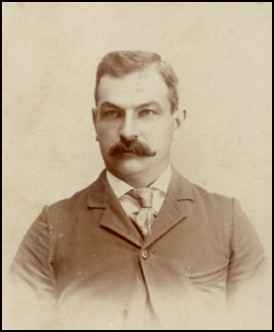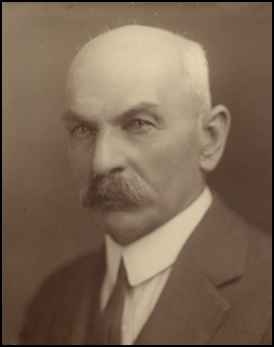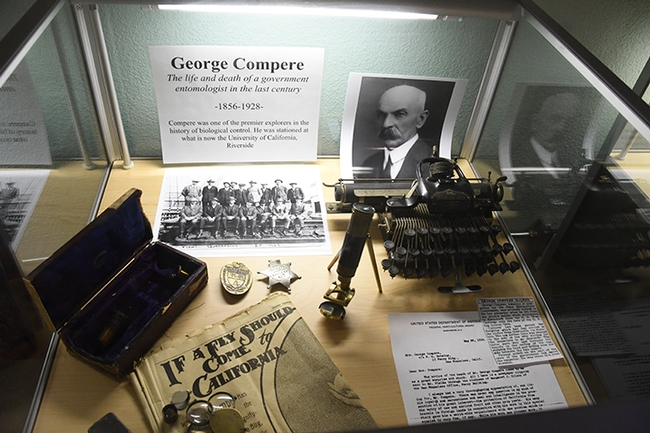
Non-entomologists may not recall his name, but entomologists--especially those who study biological control--definitely do.
And whether you do or don't, you'll want to see the display featuring George Compere (1858-1928), at the Bohart Museum of Entomology, UC Davis. The memorabilia, gifted to the Bohart Museum by a Compere relative, is cased in the hallway fronting the door of the Bohart Museum, located in Room 1124 of the Academic Surge Building, Crocker Lane.
In the display, titled "Life and Death of a Government Entomologist in the Last Century," Lynn Kimsey, director of the Bohart Museum and UC Davis professor of entomology, posted that "Compere was one of the premiere explorers in the history of biological control. He was stationed at what is now the University of California, Riverside."
Born in Davenport, Iowa, Compere worked for the Western Australia government "to collect parasites and investigate the potential for biological control of many insects," including the Mediterranean fruit fly, according to a Western Australian website. "By 1904, Compere was working for both the Californian and Western Australian governments, collecting parasites and predators from all over the world."
The Bohart Museum display includes an image of him, the typewriter he used, his badge, his pen, and a copy of the San Francisco Sunday Examiner magazine feature on him, "If A Fly Should Come to California," published on Feb. 8, 1903.
A non-dated news story, headlined "George Compeer (sic) Injured," noted that "George Compeer (sic), inspector at quarantine for the State Horticultural Commission, was seriously injured in the bay yesterday when he fell from the Jacob's ladder while attempting to disembark" from a freighter onto the tug of the U.S. Golden Gate. The exhibit also includes a letter of sympathy from the U.S. Department of Agriculture to his widow.
The Sunday Examiner magazine article called attention to "Why George Compete Has Started Around the World with a Magnifying Glass to Find a Bug and Why It is Vitally Important to the Fruit Industry that His Search Be Successful."

"BECAUSE a Fly, in advance of as terribly devastating an army of insects as ever set its plague hold upon a fertile land, came in an evil hour to Australia, George Compere of California has started around the world to find the insect that preys upon the destroyer.
"Every insect has its own particular enemy. Mr. Compere will continue to search until he finds the specimen for which he is sent. His success affords the only hope of salvation for Australia's fruit growers. He will carry the search, if necessary, into every portion of the globe where an insect can thrive. He has been employed by the Australian Government to perform this singular errand.
"En route, Mr. Compere stopped long enough in San Francisco to thoroughly acquaint the Board of Horticulture with the new danger which deserves their attention.
"If one of these flies should come to California," said Mr. Compere with simple earnestness--the simplicity of an expert knowing whereof he speaks and the earnestness of a man who has the interests of his home State lying near his heart--"If one of these flies were to come to California the consequences might be fatal to the fruit industry here for all time to come."
"These words were not idly spoken, for Mr. Compere is a careful, conservative man, who, realizing the power of the pest whose annihilation depends upon his endeavors, is gravely apprehensive for the safety of the State. With far-seeing eyes he beholds the picture of desolation that our fair land would present were the dreaded Fly to reach here before he finds its antagonist.

"For many miles around Queensland the farmers have been burning their beautiful trees and sadly setting themselves to the only task they may now venture upon without ruin to themselves. They are either converting their acres to pasture land, or plowing and planting to reap such products as wheat and barley in place of the fruits that were their pride and their means of maintenance until a Fly came to Queensland on a vessel from the Mediterranean.
"The glory of California lies in the vast yield of fruit which is sent to the ends of the earth, and in return comes golden tribute from almost every civilized country. The greater part of the valuation of real estate in California arises from the fact that fruit either is growing or can be grown upon its acres.
"Misfortune unspeakable would come upon us if, as in Queensland, the orchardists, weary and defeated in a fight against a creeping army of fruit destroyers, should give up in despair, make fuel of the trees and convert to wheat and cattle raising the orchards that have supported the great canneries, dryers and fruit shippers. Hence we shall follow the quest of George Compere with more interest than all the stories of battles between the nations. for somewhere under the sun is the parasite of the Queensland Fly, and in a glass case no bigger than is necessary to inclose one orange or peach tree can be bred enough of the soldiers of that tribe to defend all the orchards of California.
"There are those who will doubt that a few flies could ever increase to such appalling numbers as to make the great State of California fruitless, yet one gypsy moth escaping from a box in an Eastern State is now costing the local government there $100,000 a year to hold it in check. It eats, when in the caterpillar form, every green thing which is in its way. And hundreds of thousands of dollars' worth of apples are destroyed in California by the codling moth yearly because a farmer sent East to his old home for a barrel of apples to exhibit at the State Fair. That was before there was any Board of Horticulture, and the judges, finding the apples wormy, were at a loss what to do with them Not assuming the authority to destroy them and not realizing their blunder, they allowed the farmer to take them back to the farm on his promise not to let the worms get away. But they did get away and now the codling moth eats half the apple crop of California."
George Compere's son, Harold, born in 1896, followed in his scientific footsteps, becoming an internationally known taxonomist, expert biologist and biological control historian.
Attached Images:
